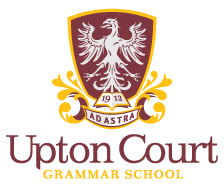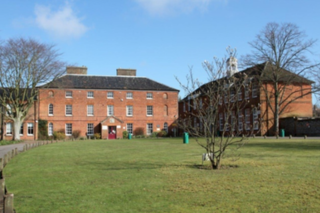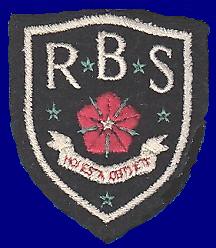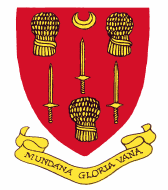
Langley Park School for Boys is a boys secondary academy school in Beckenham in the London Borough of Bromley, with a co-ed sixth form. On 31 March 2011, the school converted from a Foundation School to an academy and its current status is that of an "Academy Converter".

Upton Court Grammar School is a fully selective academy school in Lascelles Road, Slough, Berkshire.

King Henry VIII School is a coeducational private day school located in Coventry, England, comprising a senior school and associated preparatory school. The senior school has approximately 574 pupils. The current senior school fees stand at £15,150 per year, with bursaries and scholarships available.

Founded by King Henry VIII in 1541, The King's School is a state-funded Church of England Cathedral Chorister School located in Peterborough, England. It is the Chorister School for Peterborough Cathedral. Former pupils are known as Old Petriburgians.
William Ellis School is a voluntary aided secondary school and sixth form for boys located in Gospel Oak, London, England.

Paston College is a sixth form college located in the town of North Walsham, Norfolk. The college has been part of City College Norwich, following a merger of the two colleges, since 1 December 2017.

Borden Grammar School is a grammar school with academy status in Sittingbourne, Kent, England, which educates boys aged 11–18. A small number of girls have also been admitted to the Sixth Form. The school holds specialist status in sports.
Dame Alice Harpur School, known from 1882 until 1946 as Bedford Girls' Modern School, was a private girls school in Bedford, England, for girls aged 7–18. In September 2010 the junior department of the school merged with the junior department of Bedford High School. From September 2011 to September 2012 the senior schools also merged; the new school is known as Bedford Girls' School.
Dover Grammar School for Boys (DGSB) is a selective secondary school located in Dover, United Kingdom, whose origins can be traced back to the Education Act 1902 (the 'Balfour Act'). Originally founded as the Dover County School for Boys and Girls with locations behind the Dover Town Hall and on Priory Hill, the co-educational arrangements were early on prohibited by the Kent Education Committee. Dover Grammar School for Boys now occupies a prominent position overlooking the town of Dover on Astor Avenue. Its sister school is located in Frith Road and known as the Dover Grammar School for Girls (DGSG).

Rochester Grammar School often abbreviated to RGS is a grammar school for the education of girls between the ages of 11 and 18. It has academy status. It is now known as just "Rochester Grammar School" following the introduction of boys into the sixth form, despite the rest of the school remaining single sex.

Sir Roger Manwood's School is a grammar school located in the medieval town of Sandwich, Kent, England. Founded in 1569, it is one of the oldest schools in Britain and the third oldest state grammar school in Kent. Originally an all-boys school, the school became co-educational in 1982 and welcomed boarders until 2020. It now solely operates as a day school.
Cookstown High School is a combined Grammar School and Secondary School in Northern Ireland. It is one of the largest in the area, falling within the Southern Region of the Education Authority Northern Ireland.
Astor Secondary School is an 11–18 mixed, secondary school and sixth form with academy status in Dover, Kent, England. It was established in 1948 and is part of The Dover Federation for the Arts Multi Academy Trust.

Rosa Bassett School was a grammar school for girls in South London. Established in 1906 in Stockwell as the Stockwell County Secondary School, in 1913 it moved to Welham Road on the boundary between Streatham and Tooting. It was renamed the County Secondary School, Streatham, and was often referred to as Streatham County Secondary School or Streatham Secondary School. It was again renamed in 1951, after the first headmistress, Rosa Bassett.
Matthew Humberstone Church of England School, also known as the Matthew Humberstone School, Matthew Humberstone C of E School, Matthew Humberstone Comprehensive School, MHS and Matty, was a secondary school in Cleethorpes, North East Lincolnshire, England, with a Church of England tradition. It existed between 1973 until it was closed due to amalgamation in 2010.
The Bemrose School is a foundation trust all-through school situated on Uttoxeter New Road, Derby, England, with an age range of pupils from 3 – 19. Opened as a boys' grammar school in 1930, it became a co-educational comprehensive school in 1975. It then became an all-through school with the addition of a primary phase in 2014.
Queen Mary's School for Boys (QMSB) was a maintained grammar school in Basingstoke, Hampshire, England for boys aged 11–18. The school existed between 1556 and 1970 and was latterly funded by the Hampshire County Council Education Authority.

Read School, Drax is a boarding, day, and independent school, based in the rural village of Drax, near Selby, North Yorkshire, England. Formerly a boys' school, it became co-educational in 1991. As of 2023 it hosts approximately 265 boys and girls between the ages of 4–18, comprising a senior school of approximately 210 and a junior school of around 55 children.
The Dover Christ Church Academy, previously known as Archers Court Secondary School is a coeducational secondary school and sixth form located in Whitfield, Kent, 4 miles north of Dover.

Truro Cathedral School was a Church of England school for boys in Truro, Cornwall. An ancient school refounded in 1549 as the Truro Grammar School, after the establishment of Truro Cathedral in the last quarter of the 19th century it was responsible for educating the cathedral's choristers and became known as the Cathedral School.










